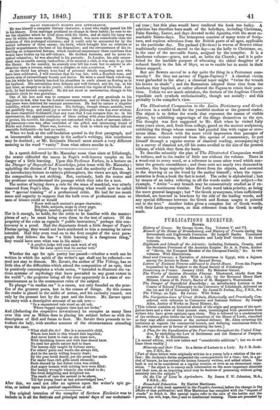The Illustrated Companion to the Latin Dictionary and Greek Lexicon
is a useful book for the youthful student or the general reader. The object is to define the words that represent the names of visible objects, by exhibiting engravings of the things themselves to the eye. The thought was first suggested to Mr. Rich when he visited Italy some years since, and, fresh from college, gazed on the ancient sculptures, exhibiting the things whose names had puzzled him with vague or erro- neous ideas. Struck with the more vivid impression that passages of the ancient writers received from this species of commentary, he put himself through a regular course of classical reading, accompanying it by a survey of classical art, till his notes swelled to the size of the present volume, of which they form the basis. To describe minutely the plan of The Illustrated Companion would be tedious, and to the reader of little use without the volume. There is a wood-cut to every word, or a reference to some other word which con- tains the generic resemblance ; and these cuts are nearly two thousand in number, the large majority taken direct from the objects, and corrected in the drawing or on the wood by the author himself; when the repre- sentation is from a book the fact is noted. The order is alphabetical ; but by means of an index referring to all the words under one subject—for example, "Attire "—any branch may be consecutively studied as if ex- hibited in a continuous treatise. The Latin word takes priority, as being the more general language; but " the Greek synonymes, when sufficiently identical, are inserted in brackets by the side of the leading words, and any special difference between the Greek and Roman usages is pointed out in the text." Another index gives a complete list of Greek words, with their Latin synonymes, so that reference from the Greek is easily made.


























 Previous page
Previous page